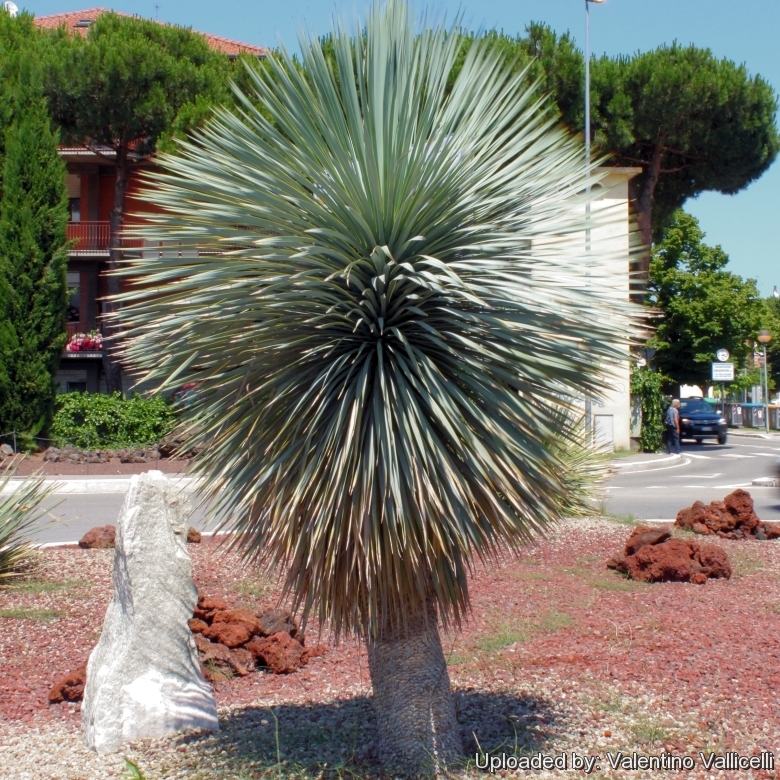
Yucca rostrata Photo by: Valentino Vallicelli
Photo taken at Cervia, Emilia Romagna, Italy.
Origin and Habitat: South Western Texas ( Brewster Co. the Big Bend country) and northern Mexico (states of Chihuahua and Coahuila).
Altitude range: 300-800 metres above sea level.
Habit and ecology: Rocky slopes and ridges, canyons bottoms and plains.
Synonyms:
See all synonyms of Yucca rostrata
back
Accepted name in llifle Database:Yucca rostrata Engelm. ex Trel.Rep. (Annual) Missouri Bot. Gard. 11: 68 1902Synonymy: 3
back
Common Names include:
ENGLISH: Big Bend Yucca, Beaked Yucca, Silver Yucca, Adam's Yucca, Nordstrom's Yucca
ARABIC ( لعربية ): يوكا منقارية
SPANISH (Español): Soyate, Palmita
Description: Yucca rostrata (Beaked Yucca) is a slow-growing tree-like yucca with upright stems and beautiful shimmering topknot of slender grey-blue foliage. The leaf-margins are minutely toothed, translucent yellowish. Large clusters of white flowers bloom on yellow-orange coloured stalks that rise above the foliage on mature plants in late spring. The specific epithet 'rostrata' means "beaked" in reference to either the shape of the flower buds or appendages on the fruit. Yucca rostrata, particularly the larger plants, is perhaps the most handsome yucca.
Habit: Stout plant, (1.8)2.5-3.5(4.5) m tall (without inflorescence). Although it can form up to three short branches, it is most often seen with a single trunk. The leaves form a dense frequently asymmetrical rosette made up of more than 100 leaves on top of the stems.
Trunk: erect, simple The old leaves fall off leaving a fibrous soft grey covering on the trunk.
Leaves: Stiffly flexible, more or less linear but widest well above the middle, flat to concave above, often keeled beneath, slightly waxy, bluish green to yellow-green, smooth on both faces often twisted; margins minutely toothed, lemon yellow, thin, and translucent. Blade 25-60 cm long, 12-17 mm broad. Terminal spine very pungent.
Inflorescence: Ellipsoid to ovoid in outline, densely many-flowered, panicle-like, sparsely pubescent, (30-)60-100(-200) cm long. Scape 0.3 - 1 m long, part-inflorescences 28 - 40, to 38 cm long.
Flowers: Pendent, globose to bell-shaped, 4-5 cm long, the parts not united. Tepals narrowly ovate, sharply acuminate, 42-52 mm long, 11-20 mm, white: Ovary 2-6 mm in diameter.
Blooming season: Spring (in habit Mar.-May).
Fruits (capsules): Erect, ovoid to ellipsoid, constricted, 3.5-7 cm long, 1.8 - 2.5 cm in diameter, becoming dry, durable, and dehiscent at the tip.. Tip with a conspicuous, slender and curved beak 2.5-4 cm long. In this yucca, fruits often very numerous (about 100).
Similar species: Thompson Yucca (Yucca thompsoniana) is very similar, but is smaller on average and has rough-feeling, narrower leaves. It is sometimes confused with Yucca rigida which has stiffer leaves that are more bowed in cross section compared to the flat leaves of Y. rostrata.
Subspecies, varieties, forms and cultivars of plants belonging to the Yucca rostrata group
 Yucca rostrata Engelm. ex Trel.: larger-growing (3-3.5 m high) with larger inflorescences, longer and broader leaves with the widest part considerably above the middle, and smooth on both faces. Distribution: SW Texas and Mexico (Chihuahua and Coahuila).
Yucca rostrata Engelm. ex Trel.: larger-growing (3-3.5 m high) with larger inflorescences, longer and broader leaves with the widest part considerably above the middle, and smooth on both faces. Distribution: SW Texas and Mexico (Chihuahua and Coahuila).- Yucca thompsoniana Trel.: smaller-growing (1-2 m high) with rough-feeling, smaller inflorescences, shorter and narrower leaves widest at or above the middle and somewhat scabrous on both faces. Distribution: Texas and N. Mexico (Chihuahua, Nuevo leon and Coahuila).
Bibliography: Major references and further lectures
1) A. Michael Powell “Trees & Shrubs of the Trans-Pecos and Adjacent Areas” University of Texas Press, 05/Jul/2010
2) Richard Spellenberg, Christopher J. Earle, Gil Nelson “Trees of Western North America” Princeton University Press, 27/Jul/2014
3) Urs Eggli “Illustrated Handbook of Succulent Plants: Monocotyledons: Monocotyledons” Springer, 17/Jul/2001
4) George A. Petrides “A Field Guide to Western Trees: Western United States and Canada” Houghton Mifflin Harcourt, 1998
5) Scott Calhoun “Designer Plant Combinations: 105 Stunning Gardens Using Six Plants or Fewer” Storey Publishing, 09/Nov/2012
6) Adrian Higgins “Chanticleer: A Pleasure Garden” University of Pennsylvania Press, 24/Feb/2012
7) "Botanica. The Illustrated AZ of over 10000 garden plants and how to cultivate them" Könemann, 2004
8) Trelease, William. "Annual Report of the Missouri Botanical Garden" 13: 68, plates 40–42, plate 84, fig. 3, plate 93, fig. 2. 1902
9) Ferguson, David J. "Cactus and Succulent Journal (U.S.) Los Angeles" 68(3): 130, 1996
10) Fritz Hochstätter “Yucca (Agavaceae). volume 1 Dehiscent-fruited species in the Southwest and Midwest of the USA, Canada and Baja California” Selbst Verlag, 2000
11) Fritz Hochstätter “Yucca (Agavaceae). volume 2 Indehiscent-fruited species in the Southwest, Midwest and East of the USA” Selbst Verlag. 2002
12) Fritz Hochstätter “Yucca (Agavaceae). volume 3 Mexico” Selbst Verlag, 2004
13) Forest & Kim Starr “Yucca rostrata (Beaked yucca)”. Plants of Hawaii. <http://www.starrenvironmental.com>. Web. 5 Jan. 2015.
 Blooming specimen at Cesenatico, Emilia-Romagna, Italy. Photo by: Matteo Faggion
Blooming specimen at Cesenatico, Emilia-Romagna, Italy. Photo by: Matteo Faggion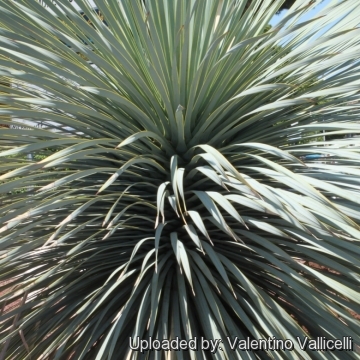 Yucca rostrata Photo by: Valentino Vallicelli
Yucca rostrata Photo by: Valentino Vallicelli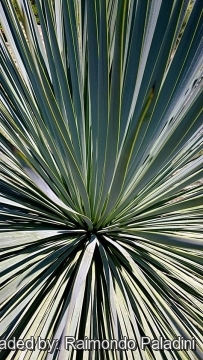 Yucca rostrata Photo by: Raimondo Paladini
Yucca rostrata Photo by: Raimondo Paladini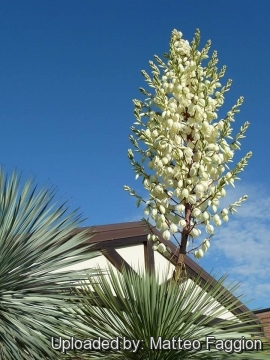 Flowers at Cesenatico, Emilia-Romagna, Italy. Photo by: Matteo Faggion
Flowers at Cesenatico, Emilia-Romagna, Italy. Photo by: Matteo Faggion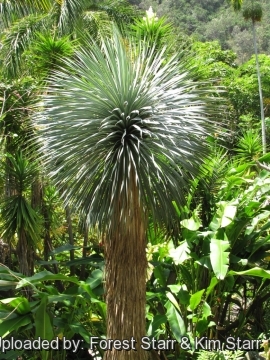 Habit at Iao Tropical Gardens of Maui, Maui, Hawaii, USA. May 22, 2012. Photo by: Forest Starr & Kim Starr
Habit at Iao Tropical Gardens of Maui, Maui, Hawaii, USA. May 22, 2012. Photo by: Forest Starr & Kim Starr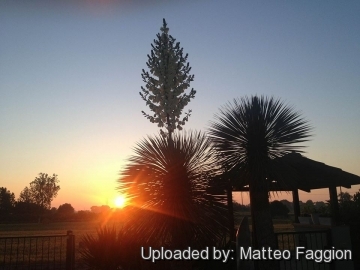 Yucca rostrata Photo by: Matteo Faggion
Yucca rostrata Photo by: Matteo Faggion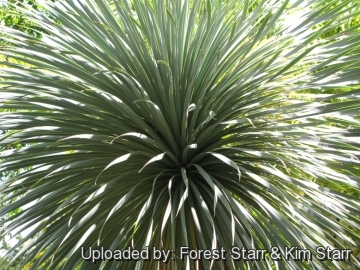 Leaves at Iao Tropical Gardens of Maui, Maui, Hawaii, USA. May 22, 2012. Photo by: Forest Starr & Kim Starr
Leaves at Iao Tropical Gardens of Maui, Maui, Hawaii, USA. May 22, 2012. Photo by: Forest Starr & Kim Starr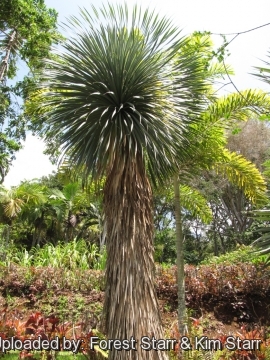 Habit at Iao Tropical Gardens of Maui, Maui, Hawaii, USA. May 22, 2012. Photo by: Forest Starr & Kim Starr
Habit at Iao Tropical Gardens of Maui, Maui, Hawaii, USA. May 22, 2012. Photo by: Forest Starr & Kim StarrCultivation and Propagation: Yucca rostrata is a slow growing, carefree and durable plant admired for its spherical form and fine texture and has become one of the most sought after of the woody lilies. It is among the yucca species that form a trunk with age and won't be passed over by anyone with an appreciation for sculptural plants. This species is highly tolerant of drought, frost and heat. Though the tip of this plant is fairly sharp the lack of stiffness in the leaves makes this plant less dangerous than most others of the genus.
Soil: Plant in very fast draining soil. It is adapted to a hot, dry environment, but has some tolerance to moisture and humidity when planted in a very well-draining soil. It is noted as preferring alkaline conditions.
Waterings: Provide little or no water in winter. Treat like a succulent. However, they grow faster if watered well (don't water the crown, though they rot easily). In the garden they should be placed in a sunny, well-drained area with additional summer water in dry climates.
Exposure: They thrive best in full sun, but can be grown with some shade and humidity, but may become leggy.
Uses: These make great specimen plants for xeriscape gardens and blend well in either tropical or arid gardens. Small plants are relatively inexpensive, but larger ones are a fortune. These make excellent potted specimens, and their symmetrical form provides a striking focal point, ans display wonderful shadows when illuminated by night lighting. In cooler climates they thrive well in gravel garden, as they have proven quite hardy because of the excellent drainage.
Hardiness. Best where winter temperatures stay above 0° C, but is hardy to around -18° C. Plants in containers can be moved inside during longer cold spells.
Maintenance: When the trunk is pruned of the older, lower leaves, the remaining leaf bases create a beautiful symmetrical spiral leaf-base pattern.
Propagation: Easy to propagate from seeds or cuttings (If available).
Your Photos

by Valentino Vallicelli




















